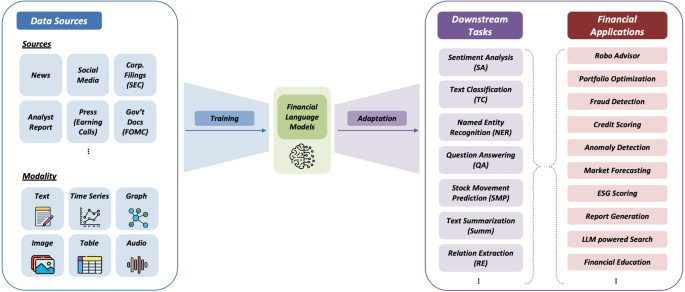Large language models (LLMs) like GPT, LLaMA, and Falcon are reshaping industries, and finance is no exception. From automating research to powering customer support, LLMs offer unprecedented capabilities. Yet, their use in finance brings unique risks, including compliance, bias, hallucination, and data security. This post explores the opportunities, risks, and best practices for deploying LLMs responsibly in financial services.
Opportunities for LLMs in finance
- Customer service automation. Chatbots powered by LLMs can handle queries about transactions, loan status, or investment options more naturally than rule-based systems.
- Document analysis. LLMs can summarize lengthy financial documents, extract entities from contracts, or assist compliance officers in scanning regulations.
- Research and insights. Analysts can use LLMs to surface trends from earnings calls, news reports, or social media sentiment.
- Code generation for analysts. LLMs can help finance teams automate SQL queries, risk dashboards, and report generation.
- Personalized advisory. LLMs can generate human-like narratives for portfolio summaries or retirement planning, provided they are combined with verified data sources.
Risks of LLM adoption
Finance is a high-stakes industry. Deploying LLMs without safeguards can cause significant harm.
- Hallucination. LLMs can generate plausible but false information — unacceptable in financial reporting.
- Bias and fairness. Training data may contain biases that manifest in lending or advisory contexts.
- Data privacy. Sending sensitive data to third-party APIs can violate data protection regulations.
- Regulatory non-compliance. AI-generated recommendations may breach financial advisory regulations if not audited.
- Explainability gap. LLMs are difficult to interpret, making regulatory justification challenging.
Techniques to mitigate risks
Grounding with retrieval
Use retrieval-augmented generation (RAG) to anchor LLM outputs in trusted financial databases and documents.
# Example: RAG pipeline with LangChain
from langchain.chains import RetrievalQA
from langchain.vectorstores import FAISS
from langchain.llms import OpenAI
retriever = FAISS.load_local("finance_index").as_retriever()
qa = RetrievalQA.from_chain_type(llm=OpenAI(), retriever=retriever)
response = qa.run("Summarize RBI's latest circular on digital lending")Human-in-the-loop review
Critical outputs like credit risk reports or compliance summaries should always be reviewed by experts.
Fine-tuning and prompt engineering
Fine-tune on domain-specific financial data and carefully design prompts to reduce hallucination.
Access control and privacy
Deploy LLMs in secure on-premise or VPC environments. Apply data anonymization and encryption when handling sensitive records.
Case study: LLM-powered compliance assistant
A bank built an internal compliance assistant using an LLM fine-tuned on regulatory filings and past enforcement actions. The system could answer questions like “What are the KYC requirements for small business loans?” Analysts saved hours per week, but all outputs were routed to a compliance officer for validation. This combination of automation and oversight delivered efficiency gains while reducing risk.
Monitoring and governance
LLM systems must be continuously monitored for drift, inappropriate responses, and performance degradation. Governance frameworks should define:
- Clear ownership of LLM-based systems.
- Audit logs of inputs and outputs for compliance.
- Incident response plans for harmful or biased outputs.
Best practices checklist
- Use RAG to ground outputs in verified data.
- Keep humans in the loop for high-stakes decisions.
- Fine-tune and evaluate on financial benchmarks (e.g., FiQA dataset).
- Deploy in secure, privacy-preserving environments.
- Set up monitoring for hallucination, bias, and drift.
Conclusion
Large language models are a powerful new tool for financial institutions. They can streamline operations, enhance customer experiences, and support compliance. But they also bring risks that cannot be ignored. The key is to pair innovation with safeguards — grounding outputs in trusted data, keeping experts in the loop, and maintaining strong governance. Those who strike this balance will unlock the benefits of LLMs while minimizing their downsides.
"In finance, accuracy is non-negotiable. LLMs must be used as copilots, not autopilots." – Ashish Gore
If you want a technical deep dive into building RAG pipelines for finance with LangChain or LlamaIndex, let me know — I can prepare a separate walkthrough with code and architecture diagrams.
